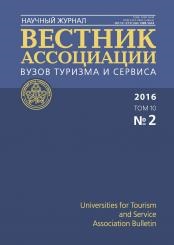The article is devoted to the application of one of the most modern and actively used interactive methods of teaching foreign languages at non-linguistic University – a case study. Method of case study is focused on students teaching methodology and develops critical thinking and communication skills of interpersonal communication. This method can be used to motivate students to use foreign language more in class. The authors believe that the method of case study is interdisciplinary by its nature and provides an opportunity to apply theoretical knowledge in practice. The article emphasizes that working with cases requires students’ active development of research skills and skills in using multiple data sources. The authors believe that the types of case study can be different, it depends on the difficulty level and language skills of the students, so it’s necessary to choose the right kind of problem of the lesson appropriate to the level of knowledge of this group. Method of case study contributes to the development of skills in written and oral communication, as well as improves skills of cooperation and teamwork. The authors pay attention to the fact that classes using techniques of case study put students in a real situation, teaching them organizational skills such as the ability to hold a business meeting, to negotiate, to prepare and deliver presentations. The article describes the stages of the work, showing the advantages and difficulties of applying case study in the foreign language. When using this method of teaching it is necessary to equip classrooms with modern teaching technical facilities. The aim of this article is to determine the value of case study method as one of interactive methods of teaching foreign languages at the University, to familiarize the reader with the experience of using this method in teaching foreign languages at the Russian state University of tourism and service.
interactive learning, foreign languages, method of case study, method of cases, cases
1. Belkina E.P. Ispol´zovanie metoda keys-stadi pri obuchenii studentov neyazykovykh napravleniy vuza inostrannomu yazyku. Filologicheskie nauki. Voprosy teorii i praktiki. 2015. № 5 (47). Ch. 1. S. 33-36.
2. Gazilov M.G. Komparativnyy metod izucheniya vremennoy sistemy frantsuzskogo yazyka. Vestnik Assotsiatsii vuzov turizma i servisa. 2013. № 3 (26). S. 53-56.
3. Gal´skova N.D., Tareva E.G. Tsennosti sovremennogo mira globalizatsii i mezhkul´turnoe obrazovanie kak tsennost´. Inostrannye yazyki v shkole. 2012. № 1. S. 3-11.
4. Gozalova M.R. Proektnaya deyatel´nost´ kak odin iz metodov razvitiya kommunikativnoy kompetentsii. Servis v Rossii i za rubezhom. T. 8. 2014. № 2 (49). S. 89-97.
5. Goncharova M.V. Keys-metod v obuchenii inoyazychnomu obshcheniyu menedzherov. Student i uchebnyy protsess: inostrannye yazyki v vysshey shkole. Sbornik nauchnykh statey / Pod red. Yu.B. Kuz´menkovoy. M.: Tsentr po izucheniyu vzaimodeystviya kul´tur FIYa MGU im. M.V.Lomonosova, 2004. (Diskussionnyy klub FLT: sovremennye tendentsii i opyt professionalov). Vyp. 5. S. 95-100.
6. Gorbatova T.N., Rybushkina S.V. Ispol´zovanie metoda keysov pri obuchenii inostrannomu yazyku v ramkakh professional´noy yazykovoy podgotovki v neyazykovom vuze. Molodoy uchenyy. 2015. № 7. S. 741-743.
7. Dolgorukov A.M. Sase stady kak sposob ponimaniya. Prakticheskoe rukovodstvo dlya t´yutera sistemy Otkrytogo obrazovaniya na osnove distantsionnykh tekhnologiy. M.: Tsentr intensivnykh tekhnologiy obrazovaniya, 2002. S. 21-44
8. Zolotova M.V., Demina O.A. O nekotorykh momentakh ispol´zovaniya metodov keysov v obuchenii inostrannomu yazyku. Teoriya i praktika obshchestvennogo razvitiya. 2015. № 4.
9. Kozina I. Case study: nekotorye metodicheskie problemy. Rubezh. 1997. № 10-11. S. 177-189.
10. Kolesnik N.P. Keys-stadi v interaktivnom obuchenii pedagogike /Metodicheskie rekomendatsii. V 2-kh chastyakh /41 - SPb NP «Strategiya budushchego», 2006. S. 19-23.
11. Mikhaylova E.A. Keys i keys-metod: obshchee ponyatiya //Marketing. 1999. № 1. S. 109-117.
12. Panfilova A.P. Innovatsionnye pedagogicheskie tekhnologii: Aktivnoe obuchenie: ucheb. posobie dlya stud. vyssh. ucheb. zavedeniy. M.: Izd. tsentr «Akademiya», 2009. 192 s.
13. Pakhtusova E.E. Metod keysov v obuchenii inostrannomu yazyku v vuze. Molodoy uchenyy. 2014. № 7. S. 532-534.
14. Pokushalova L.V. Metod case-study kak sovremennaya tekhnologiya professional´no-orientirovannogo obucheniya studentov [Tekst]. Molodoy uchenyy. 2011. № 5. T. 2. S. 155-157.
15. Castler, K & Palmer, D (1989) Business Assignments. Eight advanced case studies with video, Oxford University Press: Oxford.
16. Cotton, D., Falvey, D. & Kent, S. (2000) Market Leader, Intermediate Business English, Longmann: Pearson Education Limited.
17. Crowther-Alwyn, J. (1999) Business Roles 7-12 Simulations for Business English, CUP: Cambridge.
18. Witte, A.E (Ed.) (1999) Interactive Cases for Business English, Ellipses: Paris.
19. Yudin M.V., Gozalova M.R., Sakharchuk E.S. The state information policy as condition for the formation of social competences of student (case-study: higher schools of tourism). World Applied Sciences Journal. 2014. T. 32. № 30. r. 32-34.





